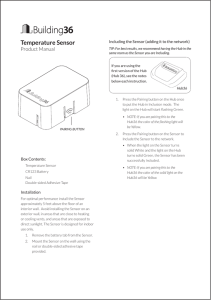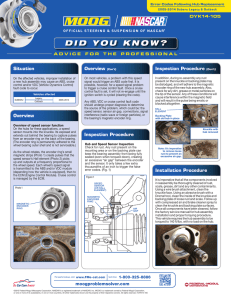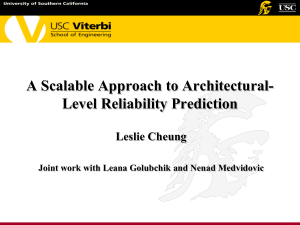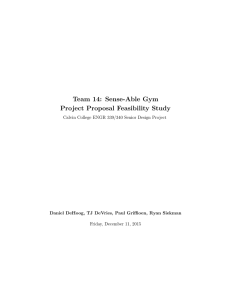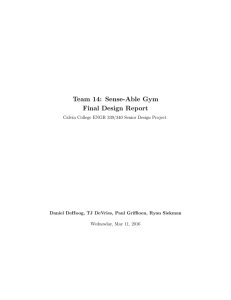Building Energy Efficiency Meets Internet of Things Curtis Kortman and Professor Matt Heun
advertisement
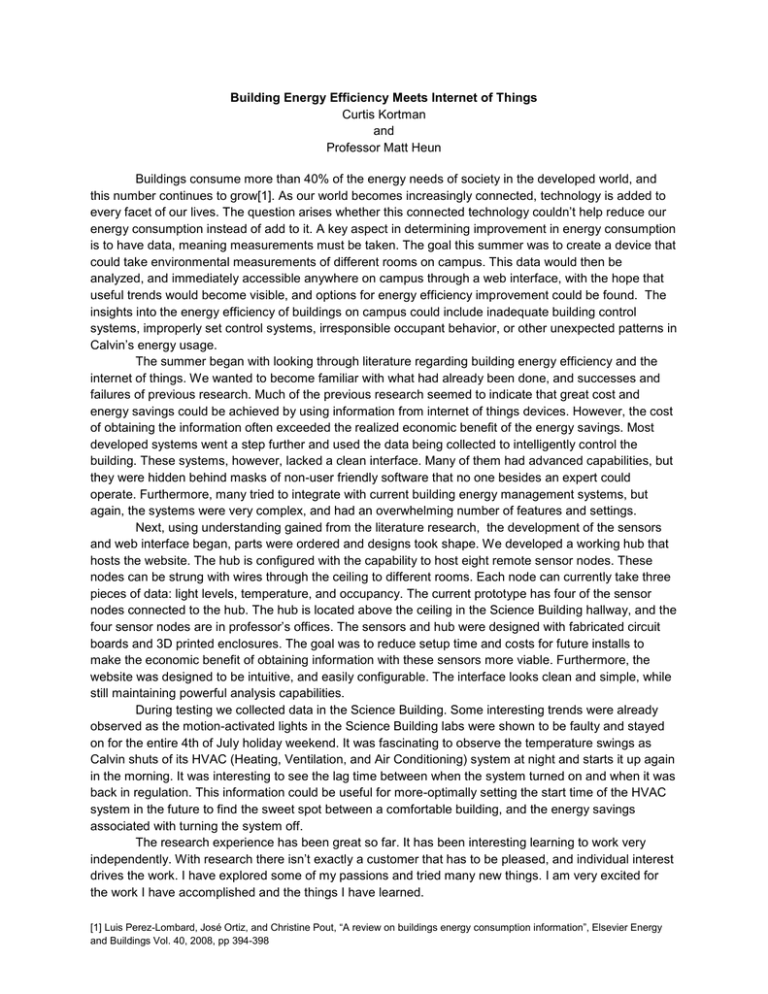
Building Energy Efficiency Meets Internet of Things Curtis Kortman and Professor Matt Heun Buildings consume more than 40% of the energy needs of society in the developed world, and this number continues to grow[1]. As our world becomes increasingly connected, technology is added to every facet of our lives. The question arises whether this connected technology couldn’t help reduce our energy consumption instead of add to it. A key aspect in determining improvement in energy consumption is to have data, meaning measurements must be taken. The goal this summer was to create a device that could take environmental measurements of different rooms on campus. This data would then be analyzed, and immediately accessible anywhere on campus through a web interface, with the hope that useful trends would become visible, and options for energy efficiency improvement could be found. The insights into the energy efficiency of buildings on campus could include inadequate building control systems, improperly set control systems, irresponsible occupant behavior, or other unexpected patterns in Calvin’s energy usage. The summer began with looking through literature regarding building energy efficiency and the internet of things. We wanted to become familiar with what had already been done, and successes and failures of previous research. Much of the previous research seemed to indicate that great cost and energy savings could be achieved by using information from internet of things devices. However, the cost of obtaining the information often exceeded the realized economic benefit of the energy savings. Most developed systems went a step further and used the data being collected to intelligently control the building. These systems, however, lacked a clean interface. Many of them had advanced capabilities, but they were hidden behind masks of non-user friendly software that no one besides an expert could operate. Furthermore, many tried to integrate with current building energy management systems, but again, the systems were very complex, and had an overwhelming number of features and settings. Next, using understanding gained from the literature research, the development of the sensors and web interface began, parts were ordered and designs took shape. We developed a working hub that hosts the website. The hub is configured with the capability to host eight remote sensor nodes. These nodes can be strung with wires through the ceiling to different rooms. Each node can currently take three pieces of data: light levels, temperature, and occupancy. The current prototype has four of the sensor nodes connected to the hub. The hub is located above the ceiling in the Science Building hallway, and the four sensor nodes are in professor’s offices. The sensors and hub were designed with fabricated circuit boards and 3D printed enclosures. The goal was to reduce setup time and costs for future installs to make the economic benefit of obtaining information with these sensors more viable. Furthermore, the website was designed to be intuitive, and easily configurable. The interface looks clean and simple, while still maintaining powerful analysis capabilities. During testing we collected data in the Science Building. Some interesting trends were already observed as the motion-activated lights in the Science Building labs were shown to be faulty and stayed on for the entire 4th of July holiday weekend. It was fascinating to observe the temperature swings as Calvin shuts of its HVAC (Heating, Ventilation, and Air Conditioning) system at night and starts it up again in the morning. It was interesting to see the lag time between when the system turned on and when it was back in regulation. This information could be useful for more-optimally setting the start time of the HVAC system in the future to find the sweet spot between a comfortable building, and the energy savings associated with turning the system off. The research experience has been great so far. It has been interesting learning to work very independently. With research there isn’t exactly a customer that has to be pleased, and individual interest drives the work. I have explored some of my passions and tried many new things. I am very excited for the work I have accomplished and the things I have learned. [1] Luis Perez-Lombard, José Ortiz, and Christine Pout, “A review on buildings energy consumption information”, Elsevier Energy and Buildings Vol. 40, 2008, pp 394-398
